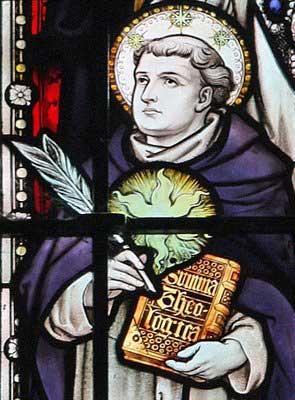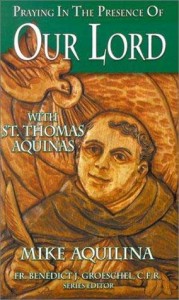Podcast: Play in new window | Download (Duration: 27:09 — 24.9MB) | Embed
Subscribe: Apple Podcasts | Spotify | Amazon Music | Android | Pandora | iHeartRadio | JioSaavn | Podchaser | Gaana | Podcast Index | Email | TuneIn | Deezer | Anghami | RSS | More
Episode 22 Beginning to Pray: St. Catherine of Siena
From Dr. Lilles’ “Beginning to Pray” blog site:
Catherine of Siena – passion for truth
She is an important figure for those who see a rediscovery of prayer as the force of renewal in the Church. Because she put her devotion to Christ first, she found herself with a spiritual mission to help restore the life and unity of Christ’s body. Some of her efforts met with a little success. But as she approached her death at the age of 33, her lifetime of effort in building up the Church seemed to be in vain. Corruption, scandal, cowardice – and most of all indifference – seemed to infect the Church even more. (For more on her life, go tohttp://www.newadvent.org/cathen/03447a.htm.) Yet she never lost hope and she persevered in prayer. This is because she understood the love and mercy of God.She was uneducated, but in 1377, by a miracle, she learned to write. Even so she retained secretaries to whom she dictated most of her thoughts. Her master work on the spiritual life is known as the Dialogues. These are conversations between her soul and God the Father. God the Father reveals his deep love for his Son and his plan to build up the Church. One of the beautiful aspects of this conversation is the Father’s explanation for how each soul can come to know Jesus.
Christ is the bridge to the Father and we cross this bridge by allowing our hearts to be pierced by what the Lord has done for us. The passion of Christ reveals at once the truth about who God is and who we are in his sight. For her, among the greatest blocks to the spiritual life is ignorance. Knowledge of God and knowledge of self go hand in hand in progressing toward spiritual maturity. But the knowing is not simply an intellectual trip. It as the kind of knowing informed by the loving affection of a real friendship. The friendship she describes in tender terms evokes the deepest joys and sorrows all at once.
The gift of tears, so central to early Dominican spirituality, is a beautiful part of this description. She presents those holy affections as the only proper response to the great love revealed in Christ crucified. These tears move us away from sin and into the very heart of God. She describes this as a journey that begins with kissing the feet of Jesus and entering into his wounded side. For her, intimacy with the Lord is always through the Cross and informed by a profound gratitude and humility.
One other beautiful feature of her spirituality is her understanding of virtue. This understanding is not quite classical in that she goes beyond the generic definition of a virtue as a good habit. Instead, she addresses a problem that is related to life in the Church. She notices that different Christians excel at different virtues. One might have a special aptitude for the art of getting on with others and is a special source of justice in the community. Another may be especially able to enter into the heart of someone enduring great difficulty and brings to the Church a particular awareness of mercy. Still another might have a profound gift of prayer. The question she takes up is why has the Father given different gifts to different members of the Body of Christ.
In the Dialogues, the Father explains to her that He has distributed his bountiful gifts in this way so that each member of the Body of Christ must rely on all the other members and at the same time each member bears a particular responsibility to support the Body of Christ commensurate to the gifts he has been given. In other words, his has distributed his gifts in a manner that disposes us to love one another. And the Father is counting on this mutual love, this genuine fellowship. It is part of His plan that as we cross Christ the Bridge we enter into communion with Him not merely individually, but together as a family.
The family of God requires a new kind of love, a love which only God can give us. A beautiful foundation is laid for what will later be understood as a “call within a call,” that particular mission each one is entrusted with in the eternal loving plan of God. On one hand, answering this call involves some suffering – just as Mother Theresa in our own time discovered. But those who endure this would not have it any other way. There is a certain joy and fullness of life that one discovers when one generously embraces the loving plan of the Father. The possibility of this joyful fulness makes Catherine’s message to the Church dynamically attractive.
For those beginning to pray, Catherine sheds light on the importance of truth, devotion to Christ and the life of the Church. These things organically hang together in her vision of the spiritual life so that growing in prayer goes beyond the merely therapeutic: it opens up the possibility of fully thriving, of living life to the full.
Dr. Anthony Lilles is a Catholic husband and father of three teaching Spiritual Theology at St. John Vianney Theological Seminary. He teaches spiritual theology and spiritual direction to transitional deacons, and the spiritual classics to the men who enter the Spirituality Year, a year of prayer in preparation for seminary formation. He is the author of the “Beginning to Pray” catholic blog spot.
For other episodes in the series visit the Discerning Hearts page for Dr. Anthony Lilles

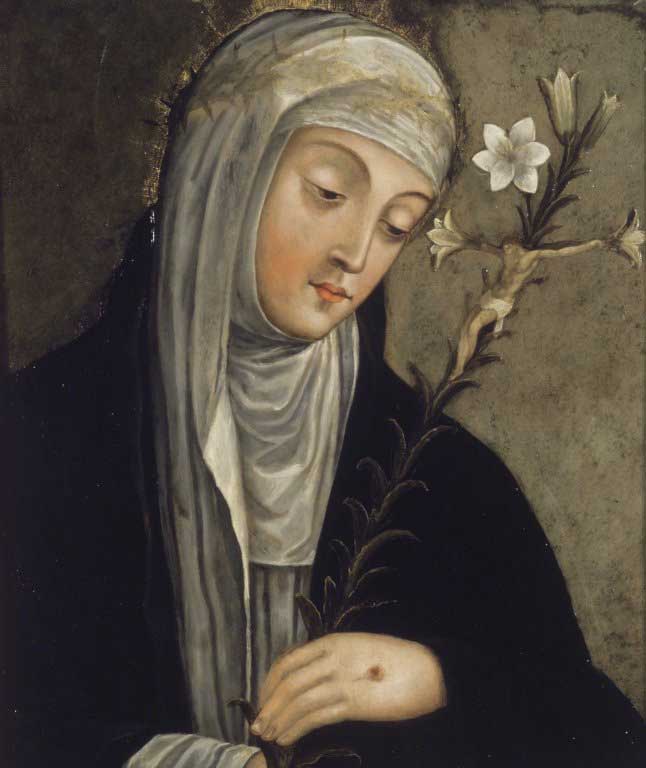
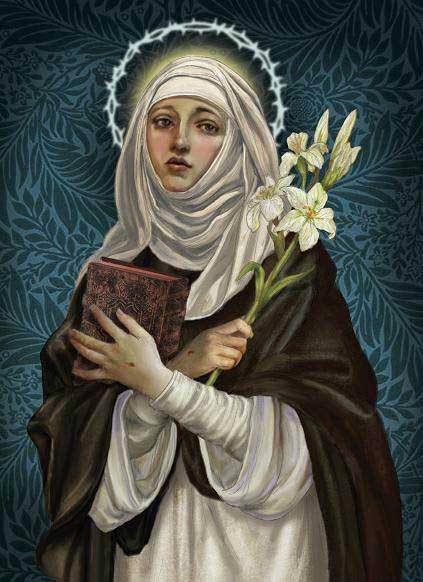 O Supreme and Ineffable God
O Supreme and Ineffable God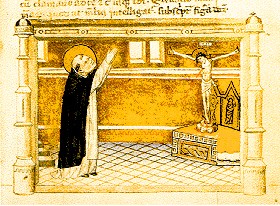
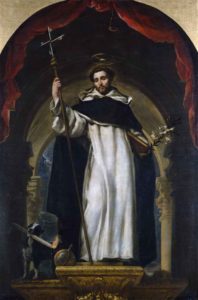 For the complete list visit:
For the complete list visit: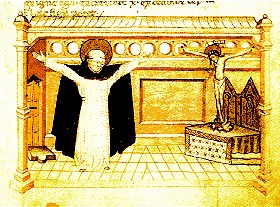
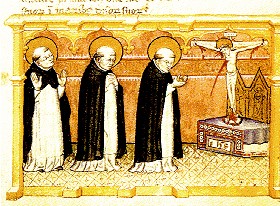
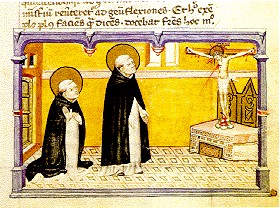 After this, Saint Dominic would remain before the altar or in the chapter room with his gaze fixed on the Crucified One, looking upon Him with perfect attention. He genuflected frequently, again and again. He would continue sometimes from after Compline until midnight, now rising, now kneeling again, like the apostle Saint James, or the leper of the gospel who said on bended knee: “Lord, if thou wilt, thou canst make me clean” [Matt. 8:2]. He was like Saint Stephen who knelt and called out with a loud cry: “Lord, do not lay this sin against them” [Acts 7:60]. Thus there was formed in our holy father, Saint Dominic, a great confidence in God’s mercy towards himself, all sinners, and for the perseverance of the younger brethren whom he sent forth to preach to souls. Sometimes he could not even restrain his voice, and the friars would hear him murmuring: “Unto thee will I cry, O Lord: O my God, be not thou silent to me: lest if thou be silent to me, I become like them that go down into the pit” [Ps. 27:1] and comparable phrases from the Sacred Scripture.
After this, Saint Dominic would remain before the altar or in the chapter room with his gaze fixed on the Crucified One, looking upon Him with perfect attention. He genuflected frequently, again and again. He would continue sometimes from after Compline until midnight, now rising, now kneeling again, like the apostle Saint James, or the leper of the gospel who said on bended knee: “Lord, if thou wilt, thou canst make me clean” [Matt. 8:2]. He was like Saint Stephen who knelt and called out with a loud cry: “Lord, do not lay this sin against them” [Acts 7:60]. Thus there was formed in our holy father, Saint Dominic, a great confidence in God’s mercy towards himself, all sinners, and for the perseverance of the younger brethren whom he sent forth to preach to souls. Sometimes he could not even restrain his voice, and the friars would hear him murmuring: “Unto thee will I cry, O Lord: O my God, be not thou silent to me: lest if thou be silent to me, I become like them that go down into the pit” [Ps. 27:1] and comparable phrases from the Sacred Scripture.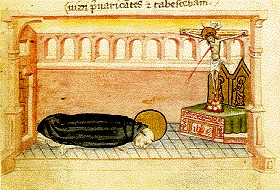 St. Dominic used to pray by throwing himself outstretched upon the ground, lying on his face. He would feel great remorse in his heart and call to mind those words of the Gospel, saying sometimes in a voice loud enough to be heard: “O God, be merciful to me, a sinner.” [Luke 18:13] With devotion and reverence he repeated that verse of David: “I am he that has sinned, I have done wickedly.” [II Kings 24:17]. Then he would weep and groan vehemently and say: “I am not worthy to see the heights of heaven because of the greatness of my iniquity, for I have aroused thy anger and done what is evil in thy sight”(28). From the psalm: “Deus auribus nostris audivimus” he said fervently and devoutly: “For our soul is cast down to the dust, our belly is flat on the earth!” [Ps. 43:25]. To this he would add: “My soul is prostrate in the dust; quicken thou me according to thy word” [Ps. 118:25].
St. Dominic used to pray by throwing himself outstretched upon the ground, lying on his face. He would feel great remorse in his heart and call to mind those words of the Gospel, saying sometimes in a voice loud enough to be heard: “O God, be merciful to me, a sinner.” [Luke 18:13] With devotion and reverence he repeated that verse of David: “I am he that has sinned, I have done wickedly.” [II Kings 24:17]. Then he would weep and groan vehemently and say: “I am not worthy to see the heights of heaven because of the greatness of my iniquity, for I have aroused thy anger and done what is evil in thy sight”(28). From the psalm: “Deus auribus nostris audivimus” he said fervently and devoutly: “For our soul is cast down to the dust, our belly is flat on the earth!” [Ps. 43:25]. To this he would add: “My soul is prostrate in the dust; quicken thou me according to thy word” [Ps. 118:25].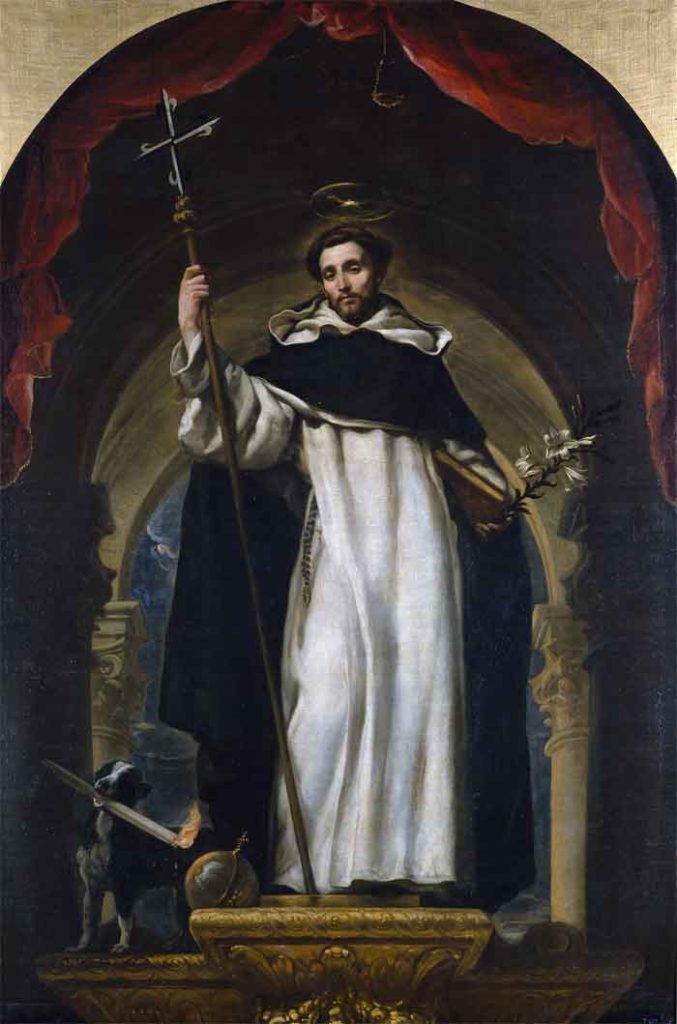 Holy teachers like Augustine, Ambrose, Gregory, Hilary, Isidore, John Chrysostom, John Damascene, Bernard, and other saintly Greek and Latin doctors have discoursed on prayer at great length. They have encouraged and described it, pointed out its necessity and value, explained the method, the dispositions which are required, and the impediments which stand in its way. In learned books, the glorious and venerable doctor, Brother Thomas Aquinas, and Albert, of the Order of Preachers, as well as William in his treatise on the virtues, have considered admirably and in a holy, devout, and beautiful manner that form of prayer in which the soul makes use of the members of the body to raise itself more devoutly to God. In this way the soul, in moving the body, is moved by it. At times it becomes rapt in ecstasy as was Saint Paul, or is caught up in a rapture of the spirit like the prophet David. Saint Dominic often prayed in this way, and it is fitting that we say something of his method.
Holy teachers like Augustine, Ambrose, Gregory, Hilary, Isidore, John Chrysostom, John Damascene, Bernard, and other saintly Greek and Latin doctors have discoursed on prayer at great length. They have encouraged and described it, pointed out its necessity and value, explained the method, the dispositions which are required, and the impediments which stand in its way. In learned books, the glorious and venerable doctor, Brother Thomas Aquinas, and Albert, of the Order of Preachers, as well as William in his treatise on the virtues, have considered admirably and in a holy, devout, and beautiful manner that form of prayer in which the soul makes use of the members of the body to raise itself more devoutly to God. In this way the soul, in moving the body, is moved by it. At times it becomes rapt in ecstasy as was Saint Paul, or is caught up in a rapture of the spirit like the prophet David. Saint Dominic often prayed in this way, and it is fitting that we say something of his method.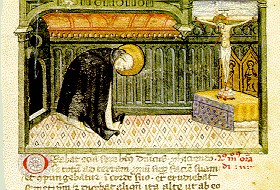 Saint Dominic’s first way of prayer was to humble himself before the altar as if Christ, signified by the altar, were truly and personally present and not in symbol alone. He would say with Judith: “O Lord, God, the prayer of the humble and the meek hath always pleased Thee [Judith 9:16]. “It was through humility that the Canaanite woman and the prodigal son obtained what they desired; as for me, “I am not worthy that Thou shouldst come under my roof” [Matt. 8:8] for “I have been humbled before you exceedingly, O Lord [Ps. 118:107].:
Saint Dominic’s first way of prayer was to humble himself before the altar as if Christ, signified by the altar, were truly and personally present and not in symbol alone. He would say with Judith: “O Lord, God, the prayer of the humble and the meek hath always pleased Thee [Judith 9:16]. “It was through humility that the Canaanite woman and the prodigal son obtained what they desired; as for me, “I am not worthy that Thou shouldst come under my roof” [Matt. 8:8] for “I have been humbled before you exceedingly, O Lord [Ps. 118:107].: ary 28 is the day the Catholic Church honors St. Thomas Aquinas. The Italian saint was a priest and is widely recognized as being one of the most influential figures in the study of theology. Mike Aquilina who he refers to him as the “poet laureate of heaven”.
ary 28 is the day the Catholic Church honors St. Thomas Aquinas. The Italian saint was a priest and is widely recognized as being one of the most influential figures in the study of theology. Mike Aquilina who he refers to him as the “poet laureate of heaven”.